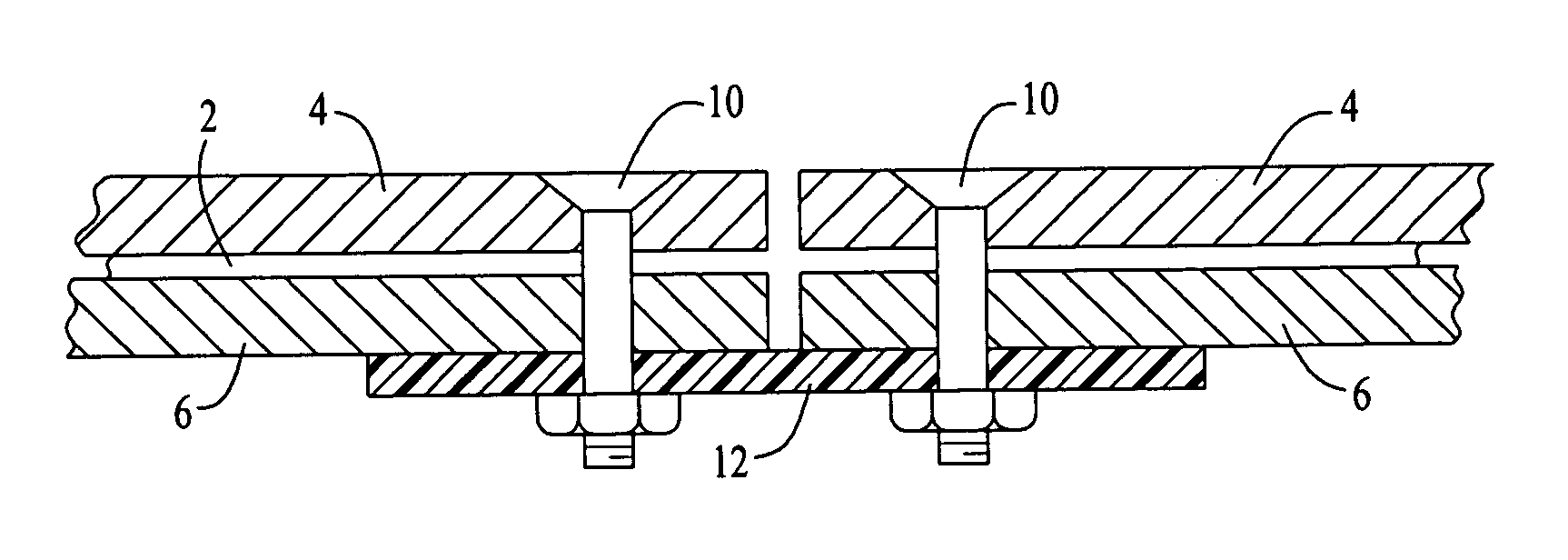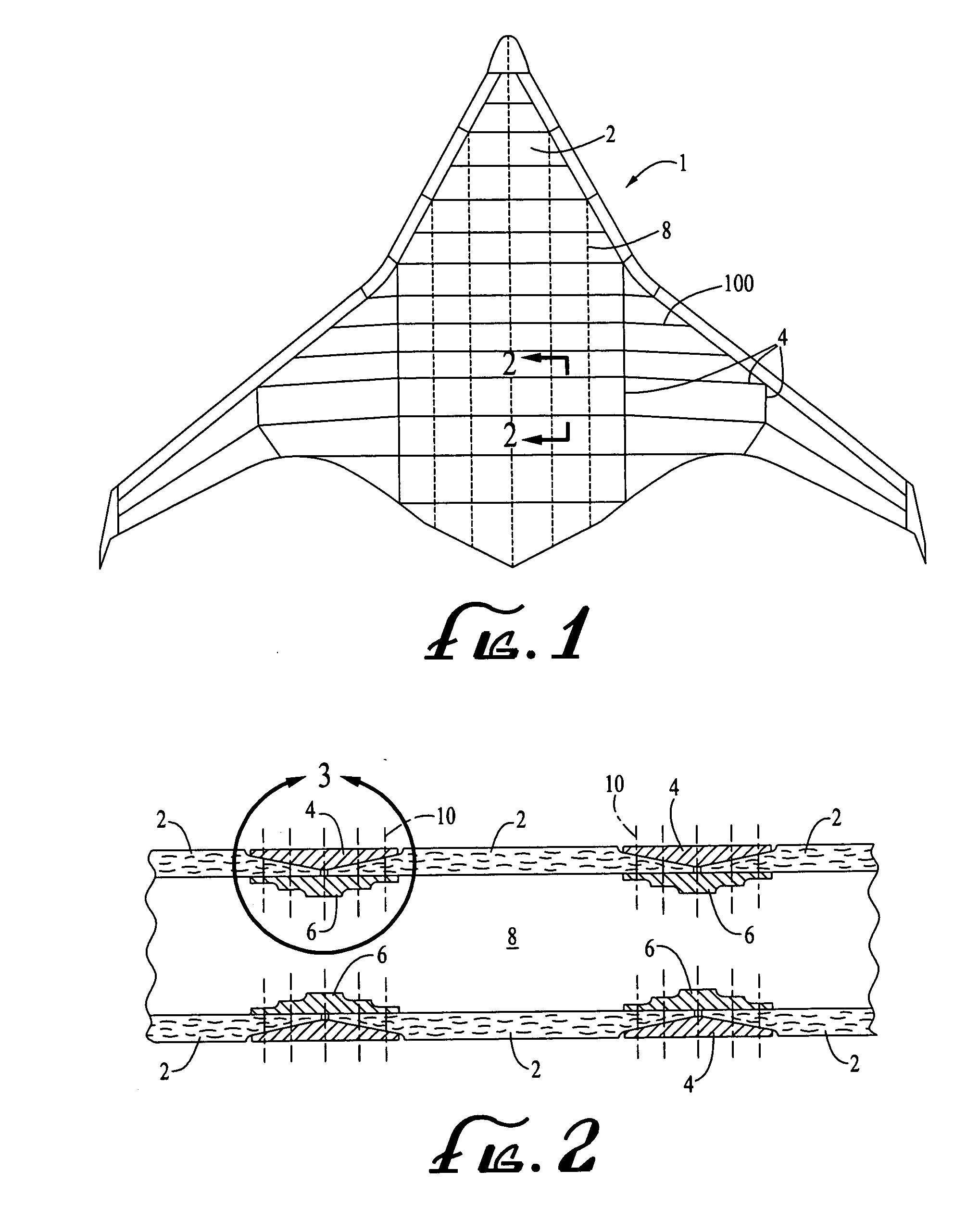Lightning damage protection for composite aircraft
- Summary
- Abstract
- Description
- Claims
- Application Information
AI Technical Summary
Benefits of technology
Problems solved by technology
Method used
Image
Examples
Embodiment Construction
[0019]FIG. 1 is a top plan view of a composite, BWB-type of aircraft 1 incorporating an exemplary embodiment of a lightning damage protection system 100 in accordance with the present invention. Although the system of the invention is shown in conjunction with a BWB type of aircraft, it should be understood that the system is not limited to such aircraft types, but may be advantageously employed with conventional composite-bodied aircraft, as well.
[0020] As illustrated in FIG. 1, the structure of the aircraft 1 may be seen to comprise a plurality of polygonal composite panels 2, i.e., structural skin panels made of plies of a fibrous material, e.g., “carbon” or graphite fibers, which are embedded in an epoxy resin to form a strong, rigid, light weight matrix. Of importance, the panels are typically made, or “laid up,” separately, and then joined to each other at their respective edges by exterior and interior splice plates 4 and 6, respectively, as illustrated in the partial cross-...
PUM
 Login to View More
Login to View More Abstract
Description
Claims
Application Information
 Login to View More
Login to View More - R&D
- Intellectual Property
- Life Sciences
- Materials
- Tech Scout
- Unparalleled Data Quality
- Higher Quality Content
- 60% Fewer Hallucinations
Browse by: Latest US Patents, China's latest patents, Technical Efficacy Thesaurus, Application Domain, Technology Topic, Popular Technical Reports.
© 2025 PatSnap. All rights reserved.Legal|Privacy policy|Modern Slavery Act Transparency Statement|Sitemap|About US| Contact US: help@patsnap.com



